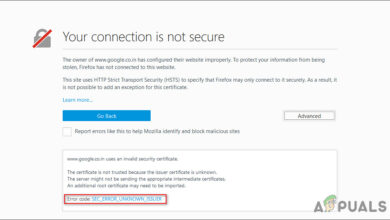How to Fix PR CONNECT RESET ERROR on Mozilla Firefox?
The PR_CONNECT_RESET_ERROR issue is encountered when the user tries to use Mozilla Firefox to connect to a website server with the HTTPS protocol but the request gets denied. This error message essentially means that the peer or some middlebox in between (most likely a firewall) is terminating the connection forcibly.
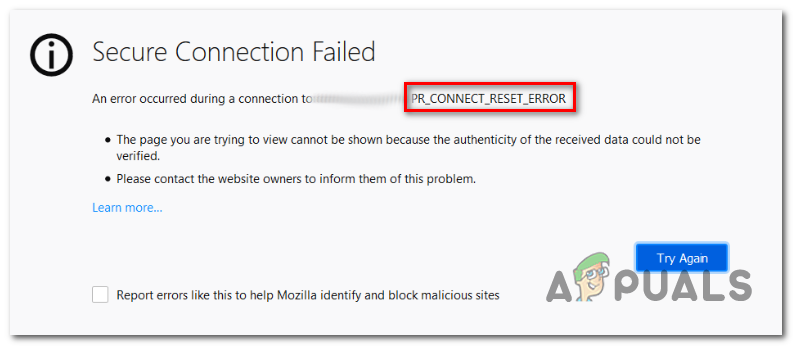
As it turns out, TCP protocol filtering can be responsible for interrupting the connection between the end-user (you) and the webserver you’re attempting to access due to a false positive. In this case, you should be able to fix the issue by accessing the advanced settings of your AV and disabling protocol filtering. ESET AV is known to have this feature enabled by default.
The issue may also be caused by certain temporary files which can interfere with new webserver connections. This typically happens if the user tries to access the same website with both a regular connection and one filtered through a VPN / Proxy. In this case, you can fix the issue by clearing your browser cache.
An overprotective firewall can also be responsible for the interruption between the end-user and the webserver. A false positive can be responsible for this behavior. If this scenario is applicable, you can fix the problem by uninstalling the 3rd party firewall and reverting back to the default Windows firewall.
Certain websites take security precautions against end-users that filter their connection through a VPN or proxy. It’s possible that you’re encountering this issue due to the fact that you’re using a VPN or proxy. In this case, you can fix the issue by disabling the proxy server or uninstalling the VPN client.
Depending on your ISP, there’s also a chance that you’re seeing this Firefox error due to a geo lock that is preventing you from accessing some web-servers from certain locations. In this case, you can change your location via a VPN tool in order to access the website.
This issue is quite common among users that are attempting to access certain web servers from a university or work environment. Some restricted networks such as these will block users from accessing certain websites. Brave browser is a good alternative in this case.
1. Disable Protocol Filtering (if applicable)
As it turns out, one popular reason that will ultimately call this issue is some kind of TCP protocol filtering that ultimately ends interrupting the connection between the peer (you) and the server you’re attempting to access.
In most cases, this ends up being caused by an overprotective AV suite that has Protocol Filtering enabled by default. This security feature will end up checking the security of all your browser communications and block any suspicious activity.
This is perfectly fine when it works as advertised. But some AV (most commonly ESET) are known to cause a lot of false positives that will end up preventing users from accessing certain websites.
If you’re using ESET Antivirus as your default 3rd party security suite, follow the instructions below to disable Protocol Filtering:
- Open the main ESET antivirus program.
- Access the Advanced setup manually or by pressing F5.
- Once you are inside the Advanced setup window, start by clicking on Web and Email.
- Next, expand the Protocol Filtering section and click on the associated slider bar next to Enable application protocol content filtering to disable the feature.
- Click Ok to save the changes, then see if the issue has been resolved by trying to access the same website that was previously triggering the error.
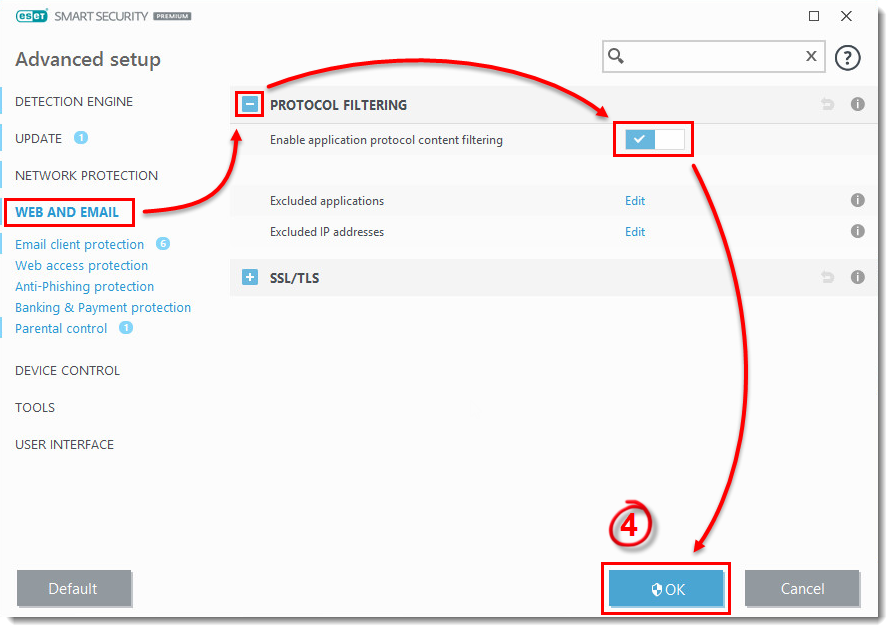
Disabling Protocol Filtering in ESET NOTE: If you’re using a different AV that is deploying protocol filtering, the steps above will obviously not apply. in this case, search online for specific steps on disable protocol filtering according to the 3rd party AV that you’re using.
If this operation wasn’t applicable or you determined that ESET’s protocol filtering wasn’t causing the PR_CONNECT_RESET_ERROR, move down to the next potential fix below.
2. Clear Browser Cache
As it turns out, this particular issue can also be caused by a temporary file that is interfering with new connections. In most cases, this will occur if you attempt to access the same web server with both a regular connection and a VPN.
If this scenario is applicable to your current situation, you can probably fix the issue by clearing Firefox’s web cache. Here’s a quick guide on how to do this in order to fix the PR_CONNECT_RESET_ERROR :
Note: If you know exactly which file is causing the problem, here’s how to clear the cache on a single website.
- Start by ensuring that every Firefox tab is closed except from one new tab that we are going to use.
- Click on the action button (top-right corner of the screen) and select Options from the newly appeared context menu.
- Once you manage to get inside the Settings menu, select the Privacy & Security menu from the left-hand table. Next, scroll down to the Cookies and Data menu and click on Clear data.
- Inside the Clear data menu, start by unchecking the box associated with Cookies and Site Data, but ensure that you check the box next to Cached Web Content.
- Click on Clear to begin the process of cleaning your web content data.
- Restart your computer and see if the issue is resolved at the next system startup.

In case the same issue is still occurring, move down to the next potential fix below.
3. Uninstall 3rd party firewall (if applicable)
If you were to break down the error code piece by piece, you’ll realize that it’s really signalling an interruption between the end-user and the server. In the vast majority of cases, this problem is facilitated by an overprotective firewall that ends up interrupting the connection due to a false positive.
If you’re certain that the website you’re trying to visit is legitimate and you’re using a 3rd party firewall instead of the default Windows firewall, you should investigate to see if the external tool is not actually creating the problem.
Keep in mind that contrary to the behaviour of an AV suite, disabling the real-time protection of a firewall will not stop this behaviour from occurring. Chances are the same security rules will remain in place.
The only way to thoroughly make sure that your third party firewall suite has nothing to do with the issue is to temporarily uninstall it. Here’s a quick guide on making this possible:
- Open up a Run dialogue box by pressing Windows key + R. Next, type ‘appwiz.cpl’ and press Enter to open up the Programs and Features window.

Type appwiz.cpl and Press Enter to Open Installed Programs List - After you manage to get inside the Programs and Features screen, move down through the list of installed applications and locate the 3rd party suite that you are currently using. Once you manage to locate it, right-click on it with your mouse and choose Uninstall from the next context menu.
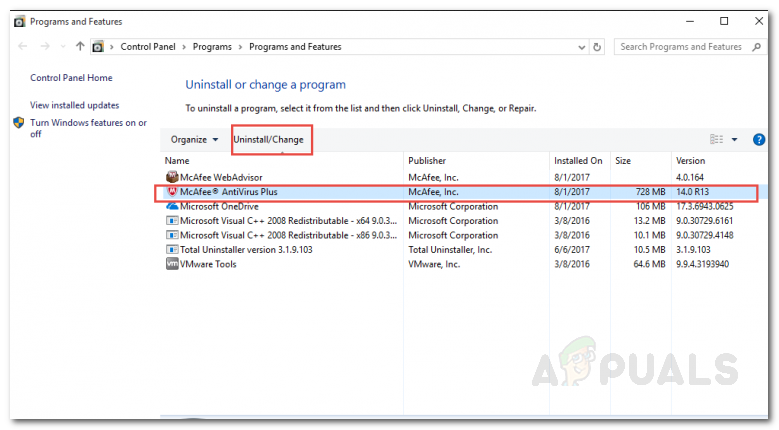
Uninstalling Firewall - Once you manage to get inside the uninstallation menu, follow the on-screen instructions to complete the uninstallation process.
- After the process is complete, you can also follow the instructions (here) to ensure that you’re not leaving behind any leftover files that might still cause the same behaviour.
- As soon as the operation is complete, restart your computer and see if the issue is resolved at the next system startup.
If this scenario wasn’t applicable or you’re still encountering this problem even after following the instructions above, move down to the next potential fix.
4. Disable Proxy / VPN (if applicable)
Another potential reason that might end up triggering the PR_CONNECT_RESET_ERROR issue is the host refusal to let end-users connect through VPN or Proxy servers. VPNs are not easily detected, but Proxy servers are nowadays restricted with several high-profile websites.
If you’re using a proxy server or VPN client to browse anonymously online, chances are that’s the reason why you are dealing with the PR_CONNECT_RESET_ERROR issue. To test this theory, you should disable your proxy or VPN client and see if the problem goes away on your way.
Since the two processes are different, we created two separate guides. Feel free to follow whichever guide is applicable to your scenario.
Removing the VPN client
- Press Windows key + R to open up a Run dialogue box. Next, type ‘appwiz.cpl’ inside the text box and press Enter to open up the Programs and Features menu. Once you’re inside the User Account Control (UAC) prompt, click Yes to grant administrative privileges.

Opening programs and features - Once you arrive inside the Programs and Features screen, go ahead and scroll through the list of installed software and locate the active VPN client that you’re currently deploying. Once you manage to locate it, right-click on it and choose Uninstall from the context menu.

Uninstalling a VPN tool - Inside the uninstallation wizard, follow the on-screen instruction in order to complete the uninstallation of the VPN client.
- Once the process is complete, restart your machine and see if the problem is fixed at the next startup.
Removing the Proxy server
- Press Windows key + R to open up a Run dialogue box. Next, type ‘ms-settings:network-proxy’ inside the text box and press Enter to open up the Proxy tab of the Settings app.

Run dialog: ms-settings:network-proxy - When you’re inside the Proxy tab of the Settings menu, move down to the Manual Proxy Setup section. Once you’re there, navigate to the right-hand section of the screen and disable the toggle associated with the Use a proxy server.
- After you do this, restart your computer and wait for the operation to complete. After the next startup sequence is complete, repeat the action that was previously causing the PR_CONNECT_RESET_ERROR error.
In case the same issue is persisting or none of the issues was applicable to your current situation, move down to the next potential fix below.
5. Bypass the ISP lock (if applicable)
Just how a VPN client can be responsible for causing the PR_CONNECT_RESET_ERROR issue, it can also serve as a tool capable of getting you out of this predicament. It’s possible that you’re seeing this error message due to the fact that your ISP ends up discarding the IP address of the web server that you’re trying to visit.
This is very common in instances where there’s a geo-lock in place. Several users finding themselves in a similar situation have confirmed that they were finally able to access the website without encountering the same error after installing and using a VPN solution.
If you want to try this workaround, we found a free alternative that will allow you to explore this potential fix without investing money in a VPN client. Here’s a quick guide on using a free VPN solution to bypass the geo-lock causing the PR_CONNECT_RESET_ERROR issue:
- Start by accessing this link (here) and click on the Download Now button to start the process of downloading the installation executable. Once you get to the next screen, click on the Register button that’s associated with the Free account.

Downloading the VPN sollution - Once you get to the next screen, enter your email address to complete the initial registration.

Registering for the service Note: At this step, it’s crucial that you use a valid email address to complete the initial registration. This will be later used to verify the account.
- Once the correct email is inserted, access your inbox and look for the verification email that you got from Hide.me. Check your Spam folder if you can’t see it inside the Inbox / Updates folder.
- After you manage to locate your email, open it and click on Activate my account to verify the VPN registration.
 Note: It might take several minutes for the email to arrive, so wait patiently until the process is complete.
Note: It might take several minutes for the email to arrive, so wait patiently until the process is complete. - On the next screen, you will need to select an appropriate user and password that will be used for your Hide.me account. After you are finished with this, click on Create account.

Creating an account with Hide.me - Now that you are successfully signed into the account that you have previously configured and verified, go to Pricing > Free section. Inside, click on Apply Now in order to activate the free plan.
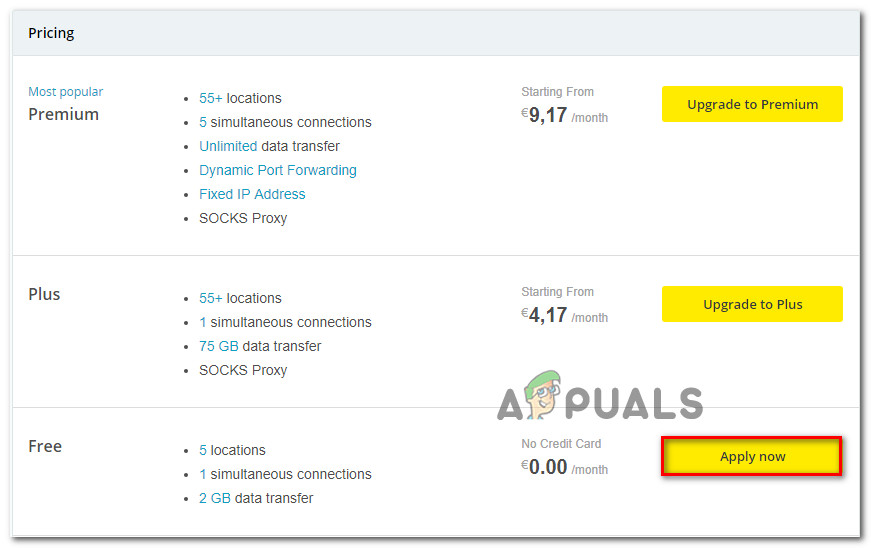
Apply for the free account - With the Free plan activated, move over to the Download clients section and click on the Download Now button appropriate to the OS that you’re currently using with your computer.
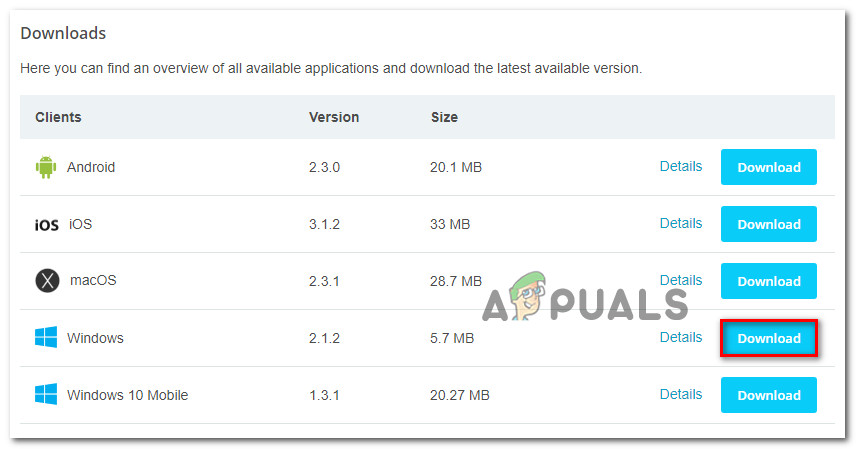
Downloading the Windows client of Hide.me - Once the download is complete, double-click on the installation executable. Next, follow the on-screen prompts to complete the operation on your computer.

Installing the Hide.Me VPN application - After the installation is finished, open the application and sign-in with the account that you previously created.
- Finally, click on Start your free trial, select a suitable region that is not geo-locked by the web server and you are good to go.
In case this operation was not applicable to your current situation or it didn’t resolve the PR_CONNECT_RESET_ERROR issue, move down to the next method below.
6. Connect to a different network
As it happens, the issue can also be beyond your control. If you’re connected to a closed/restricted network at work or university, chances are certain websites will show the PR_CONNECT_RESET_ERROR when you attempt to access through Firefox.
If this scenario is applicable, you can attempt to connect to a different network and see if the issue no longer occurs. Creating a hotspot from your phone and connecting your laptop is a mobile way of testing it.
In case the issue no longer occurs, you can try to use Brave browser (instead of Firefox) to circumvent limited work or university closed networks. Several affected users have confirmed that this allowed them to access web servers that were previously blocked.



